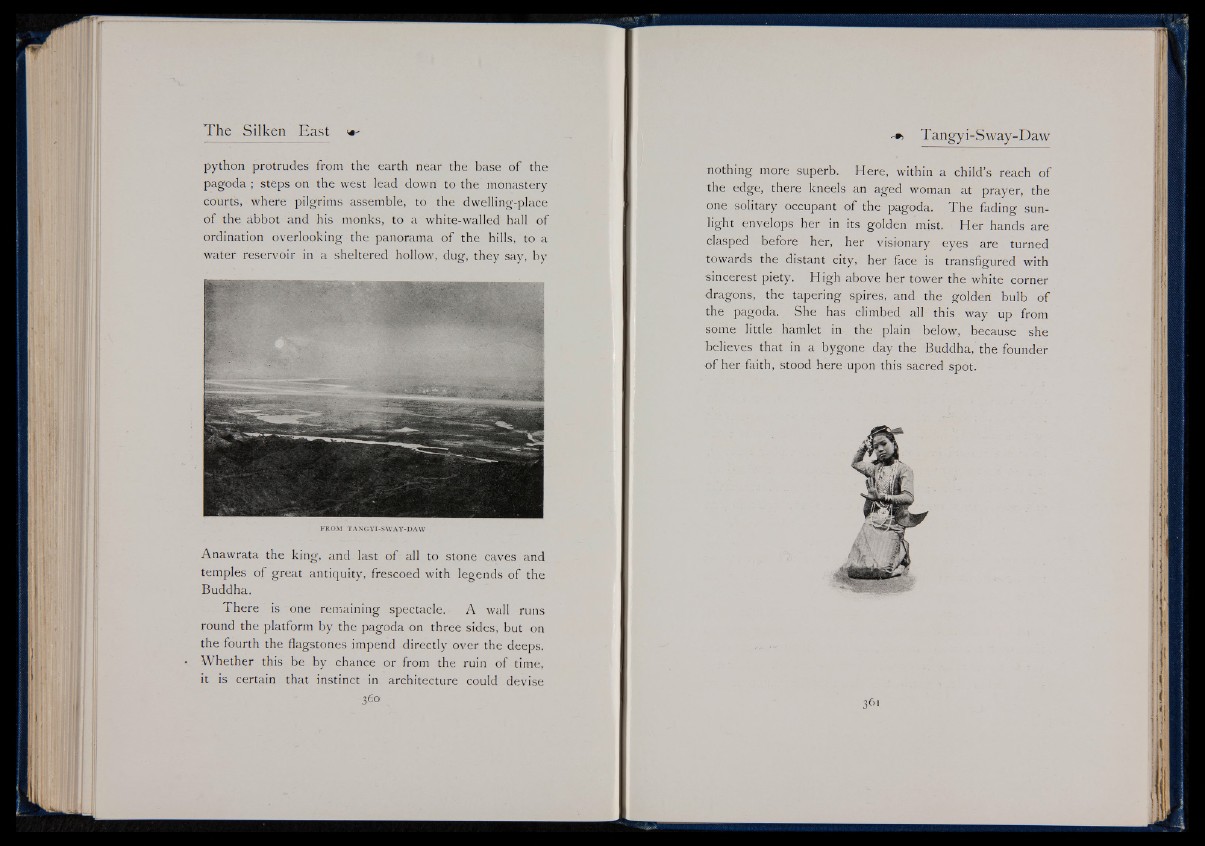
python protrudes from the earth near the base of the
pagoda ; steps on the west lead down to the monastery
courts, where pilgrims assemble, to the dwelling-place
of the abbot and his monks, to a white-walled hall of
ordination overlooking the panorama of the hills, to a
water reservoir in a sheltered hollow, dug, they say, by
FROM TANGYI-SWAY-DAW
Anawrata the king, and last of all to stone caves and
temples of great antiquity, frescoed with legends of the
Buddha.
There is one remaining spectacle. A wall runs
round the platform by the pagoda on three sides, but on
the fourth the flagstones impend directly over the deeps.
Whether this be by chance or from the ruin of time,
it is certain that instinct in architecture could devise
360
nothing more superb. Here, within a child’s reach of
the edge, there kneels an aged woman at prayer, the
one solitary occupant of the pagoda. The fading sunlight
envelops her in its golden mist. Her hands are
clasped before her, her visionary eyes are turned
towards the distant city, her face is transfigured with
sincerest piety. High above her tower the white corner
dragons, the tapering spires, and the golden bulb of
the pagoda. She has climbed all this way up from
some little hamlet in the plain below, because she
believes that in a bygone day the Buddha, the founder
o f her faith, stood here upon this sacred spot.